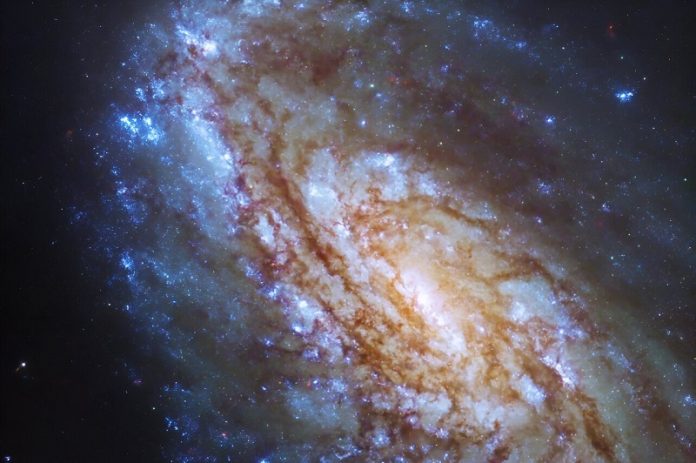
What is dark matter?
Even astrophysicists are still trying to answer this question. Dark matter makes up most of the matter in the universe and about a quarter of the universe as a whole.
It’s thought to be the cosmic glue that holds everything together, but we don’t yet know what kind of particle it is.
Finding out could transform our understanding of the universe’s past, present, and future.
A new study by astrophysicists at Northeastern University suggests a novel way to tackle this age-old mystery.
Their research, published in the Monthly Notices of the Royal Astronomical Society, proposes using galaxy clusters as natural dark matter colliders to see what happens when dark matter interacts with itself.
“Everything in the universe is a particle, a wave, and a field, so the basic assumption is dark matter must be a particle,” says Jacqueline McCleary, an assistant professor of physics and the study’s lead author.
“The question is what kind of particle, because ‘particle’ is a very vague term.”
The idea is to observe merging galaxy clusters, which are groups of galaxies drawn together by gravity, as they collide. This could provide insights into the behavior of dark matter, overcoming a significant challenge: we can’t easily study dark matter on Earth.
Particle accelerators like the Large Hadron Collider have helped us learn about regular matter through high-energy collisions, but dark matter can’t be manipulated in the same way. Dark matter occupies space but is invisible because light doesn’t interact with it.
However, it still affects the universe. Scientists believe a vast web of dark matter exists throughout the cosmos, helping galaxies form and grow by attracting normal matter.
“Galaxy clusters are dominated by dark matter,” McCleary explains. “Eighty to ninety percent of their mass is dark matter, and the more massive an object is, the faster its dark matter particles move. Essentially, we’re studying very high-energy collisions.”
Various theories have been proposed about dark matter. Some suggest it might be a photon, an ultra-lightweight neutrino, or even a tiny black hole. The current leading theory is that dark matter is made up of WIMPs (weakly interacting massive particles). These are hypothetical, large, heavy, slow-moving particles that interact weakly with each other and with normal matter.
“For about 20 years, ground-based particle detection experiments have been searching for WIMPs but haven’t found anything yet,” McCleary says. “This suggests dark matter might not be as simple as we thought. It’s probably not a pure WIMP, or we would have found it by now. This has led us to consider other particle models for dark matter.”
The new method proposed in the paper involves observing collisions between galaxy clusters to see if dark matter interacts with itself. McCleary and her team used hydrodynamic simulations, large-scale computer programs that model physical interactions between particles, to study these collisions.
By watching dark matter interactions, scientists could determine some basic characteristics of dark matter particles, helping them refine their search.
“If you can measure some self-interaction, or if you can place an upper limit on it, you can rule out or confirm certain types of particles that dark matter could be,” McCleary says. “If you observe self-interaction, it opens up new classes of particles and theories.”
The study suggests that examining around 100 merging galaxy clusters could help measure dark matter self-interactions to a certain threshold.
“It might seem counterintuitive because we want a positive answer: What is dark matter?” McCleary says. “But here, we’re sort of forced to ask, what isn’t it? It’s a process of elimination.”
This new approach could be a significant step towards finally answering one of the most fundamental questions in astrophysics.



